[New Sancai Compilation and First Release] Italian Venetian School artists created many art treasures with their novel and bold visual style, using rich colors, greater vitality and unparalleled magnificence. The picture above is St Mark's Basilica in Venice. The following paintings and frescoes, displayed in Venice's busy museums and on the walls of its quiet churches, give you a quick taste of Venice's vast and diverse artistic heritage.
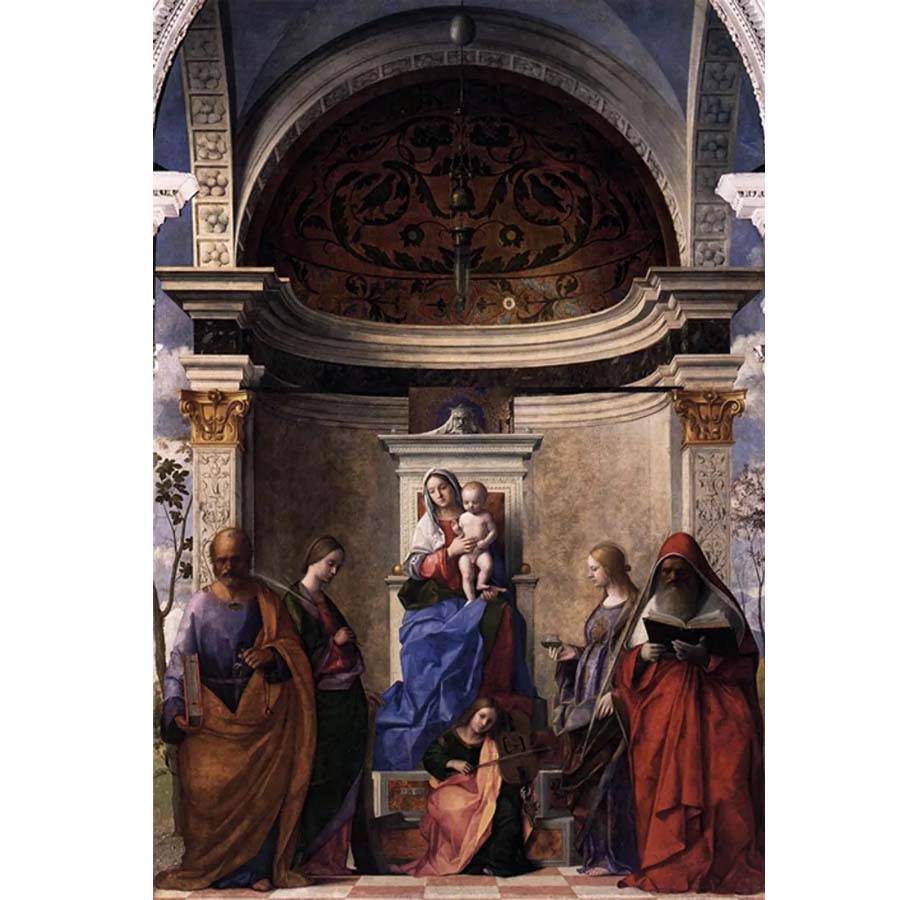
△ "The San Zaccaria Altarpiece": This painting is an oil painting on panel by the painter Giovanni Bellini (1430–1516). It was painted in 1505 and is now in the collection of Venice. Church of St. Zacharias. This painting is dedicated to the Venetian statesman and diplomat Pietro Cappello. This is Bellini's first painting. It depicts the Virgin Mary and the Son of Christ sitting on the throne, with the apostle Saint Peter standing on both sides from left to right. Peter, Santa Caterina da Siena, Saint Lucy and Saint Jerome.
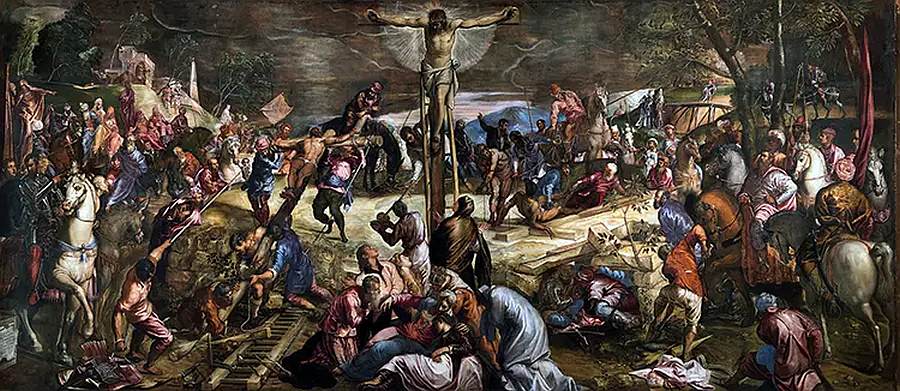
△ "Crucifixion" (1565): This can be said to be Tintoretto's best painting. In this large oil on canvas painting, a desperate crowd crowds the foot of the Crucifixion, against a darkened sky. The painting is now on display in the Scuola Grande di San Rocco in Venice.
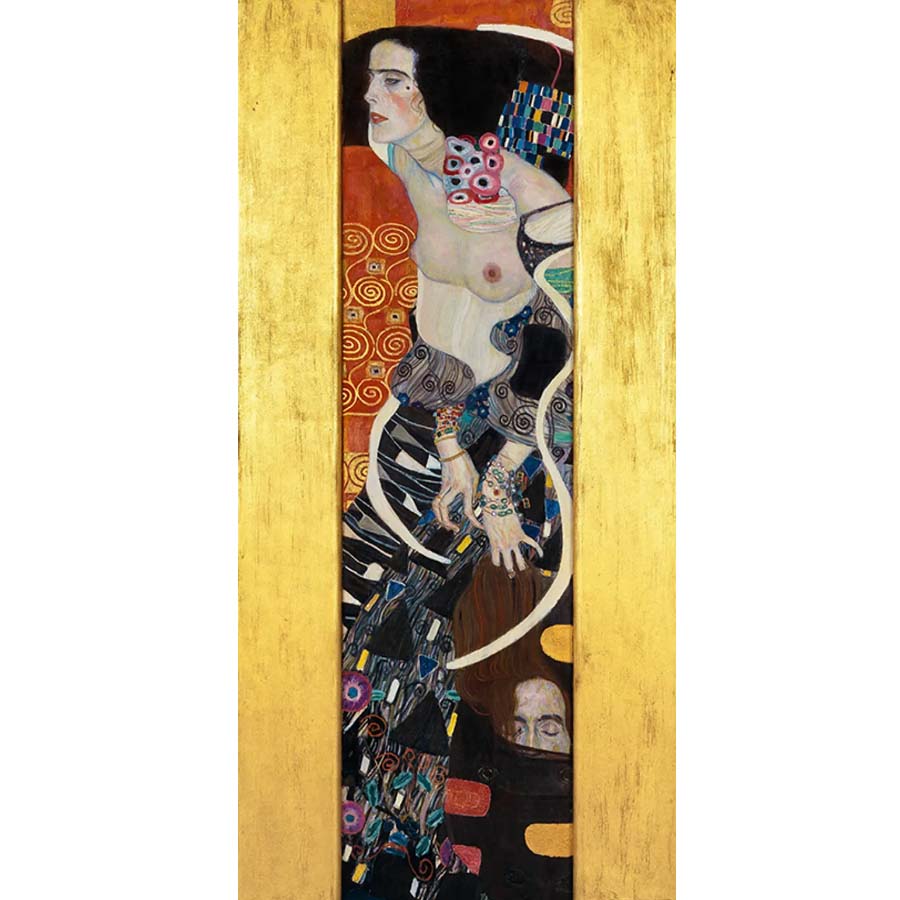
△ "Judith II": The painter Gustav Klimt (1862–1918) based on the Bible, Judith beheaded General Holofernes, To save her place Bethulia from being destroyed by war. Filled with a sense of energy reminiscent of Salome's Dance of the Seven Veils, this work was acquired by the City of Venice in 1910. It now hangs in the Gallery of Modern Art on the first and second floors of Ca' Pesaro. The third floor of the palace houses the Museum of Oriental Art.
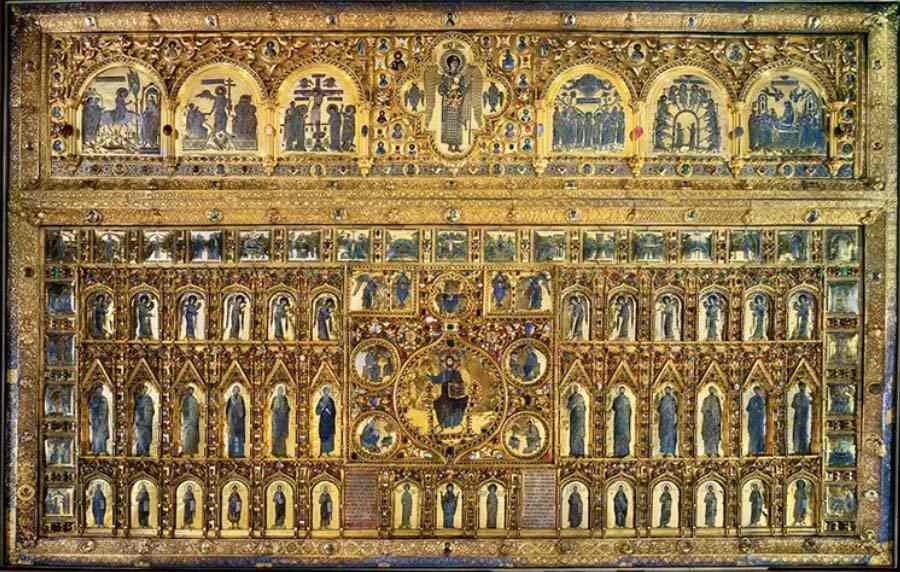
△ "Altar" (Pala d'Oro): St. Mark's Basilica is known as the "Golden Church" (Chiesa d'Oro) and is one of the best examples of Byzantine architecture in Italy. Its altar (Pala d'Oro) was built between the 10th and 13th centuries and is generally regarded as one of the most exquisite works of Byzantine enamel. Its 8,000 square meters of mosaics (by artists such as Veronese, Tintoretto and Titian) attract more visitors than any other Venetian landmark. The altar was commissioned by Doge Pietro I Orseolo in 976, and the enamel inside was taken from Constantinople after the Fourth Crusade. The golden structure contains 1,300 pearls, 300 sapphires, 300 emeralds, garnets, amethysts, rubies, spinels and topaz, among others.
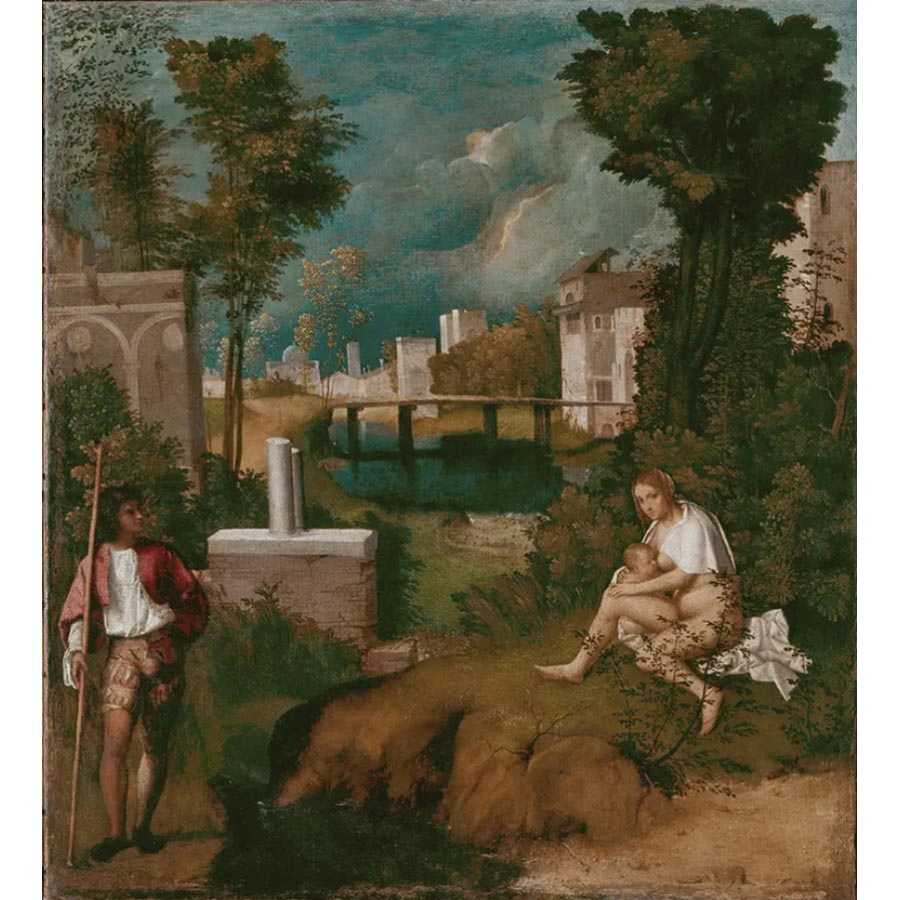
△ "La Tempesta" (1505): This painting by the painter Giorgione is not only one of the earliest landscape paintings in the world, but also the most mysterious painting in Venice. Giorgione melancholy painted a green and turquoise countryside illuminated by a flash of lightning. The men on the left are thought to be shepherds and soldiers, while the naked woman nursing her child is sometimes described as a gypsy. Whether the work represents a sociopolitical allegory, a symbolic narrative, or pure fantasy depends on who you ask. It is on display in the Gallerie dell'Accademia, a palace dedicated to Venetian School artists such as Bellini, Tintoretto and Titian.

△ "Madonna in Glory with St Sebastian, 1572": This is the painting by the painter Paolo Veronese (1528 - 1588) in the Church of San Sebastiano One of a series of frescoes from the mature period of San Sebastiano, depicting many scenes from the saint's life, located above the altar of the church. Veronese worked on these paintings for more than 20 years and are buried in the church.
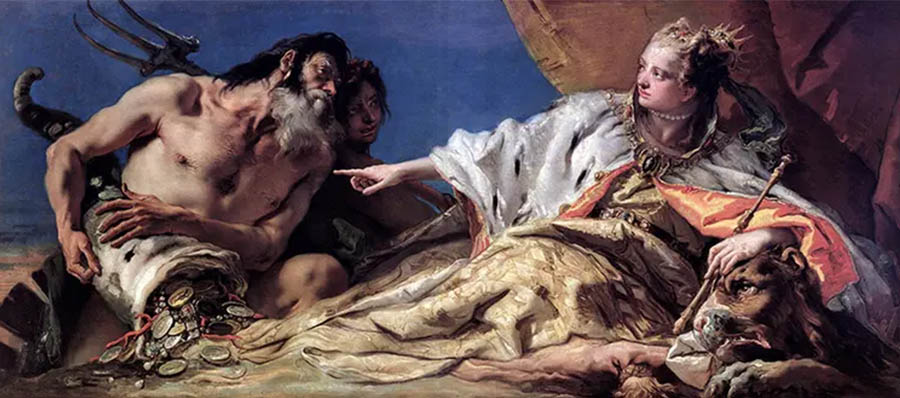
△ "Neptune Offering Gifts to Venice" (circa 1758): The painter Giovanni Battista Tiepolo (1696–1770) was commissioned to replace Tintoretto with this new mural. 1518–1594) faded frescoes celebrating the wealth of Venice and the reign of Poseidon. Venus, the goddess of love, is depicted as a beautiful goddess leaning on the lion St Mark. Poseidon offered gifts from a cornucopia filled with coins, coral, and pearls.
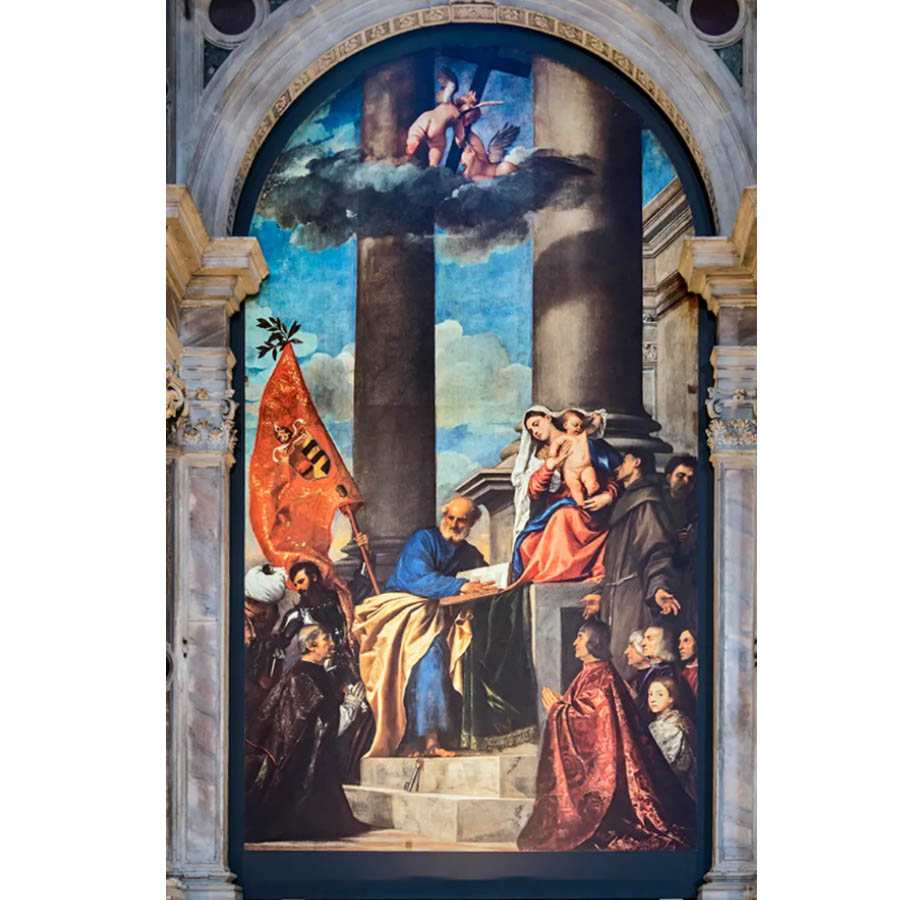
△ "Pesaro Madonna": Renaissance art master Titian (1488/90 –1576) depicts his patron, the then Bishop of Paphos in Cyprus (Cyprus) Jacopo Pesaro of Paphos kneels at the feet of the Virgin, accompanied by his family, saints, a knight, two prisoners and a turbaned Turk. Titian broke with the tradition of placing pious figures at the center of the composition to produce a stronger sense of movement.
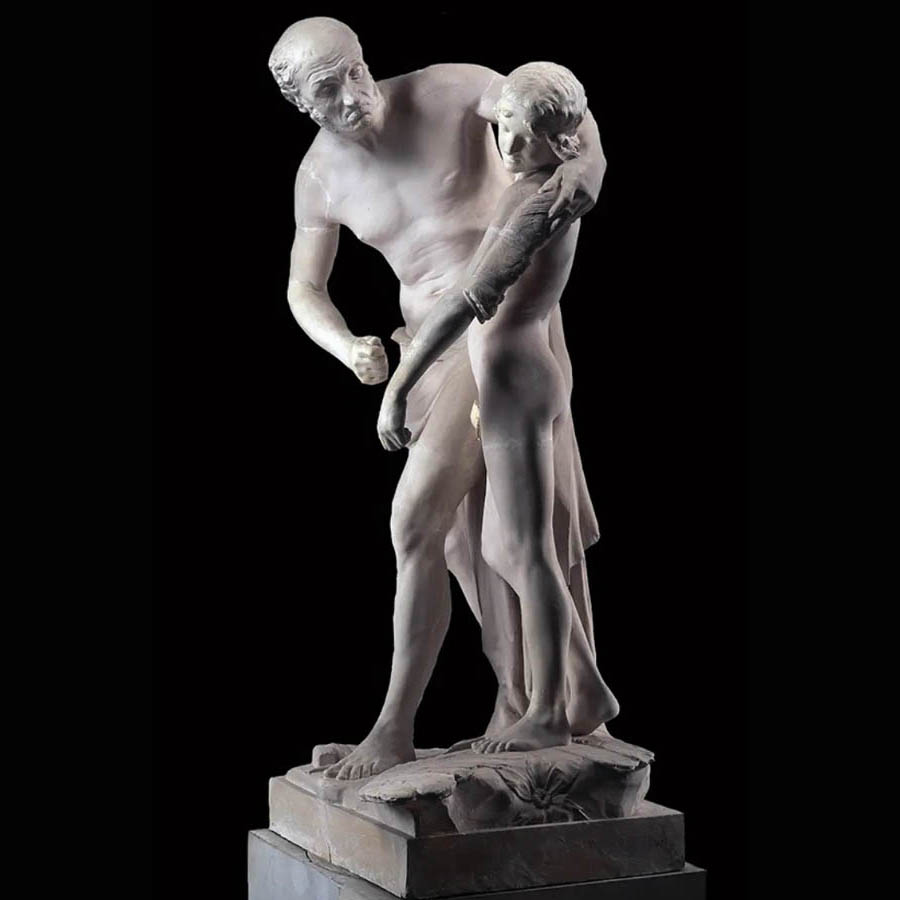
△ "Daedalus and Icarus" (1779): Marble sculpture exhibited by painter Antonio Canova at the Museo Correr. On the left is the elderly craftsman Daedal Rus (Daedalus), he is regarded as a symbol of wisdom, knowledge and power. Next to him, with wings on his back, is his son Icarus.
(Source: thear wspaper website)
(Compiled by: Bai Ding)
(Editor: Jiang Qiming)
(Source of the article: Compiled and published by New Sancai)
